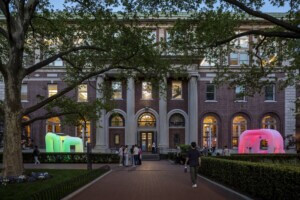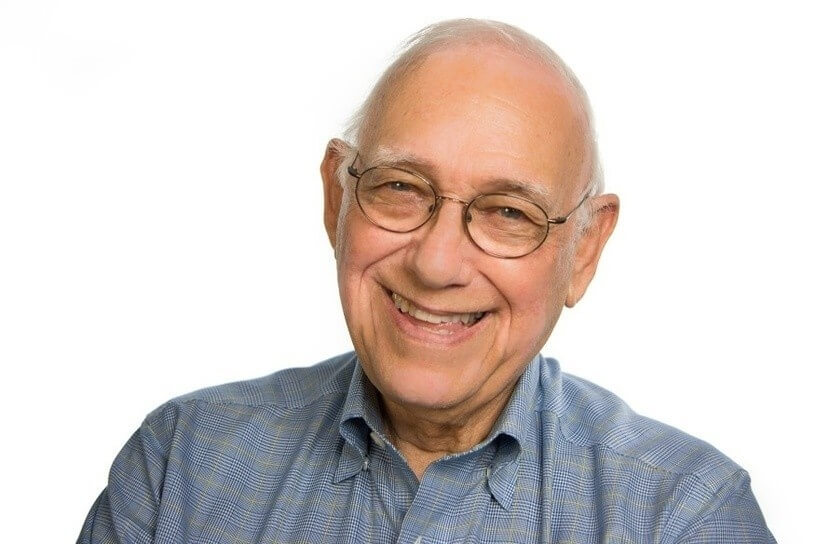On September 28, the first round in a series of debates on the future of computational design kicked off at Columbia University’s GSAPP. Under the heading Post-Parametric, the first debate was co-chaired by David Benjamin, partner at The Living design studio and director of GSAPP’s Living Architecture Lab, and Michael K. Reed of Columbia’s Department of Computer Science and Blue Sky Studios. Focusing on the subject of data, the event brought Casey Reas to the table with Chuck Eastman, and the result, one might say, was a technical knockout.
Reas, a professor at UCLA’s Design Media Arts department and cofounder of the programming language called Processing, opened by demonstrating the power and versatility of Processing, with an emphasis on its role as a collaborative, open-source, and altogether egalitarian venture. Even to an audience familiar with his work, the fluidity with which he moved from code to geometry and back again was dazzling. This was a hard act to follow.
A couple of slides into the presentation by Chuck Eastman, professor of architecture and computing at the Georgia Institute of Technology and author of the BIM Handbook, the BIM models of courthouse projects presented by Eastman had students slowly filtering out of the auditorium. Perhaps the inadvertent message of the students’ exodus suggests that scripting is perceived as spontaneous, exciting, and anti-establishment, whereas parametric modeling, stripped of its “wow factor,” is now becoming an extension of the corporate machine—the ideal tool for making the design of prison cells and judges’ chambers more efficient. (Eastman’s last slide was a collage of the design-office-turned-war-room of the future, where all data imaginable is displayed simultaneously on large monitors for ultimate control.)
During the roundtable, co-chair Benjamin tried to head off this simplistic and polarizing reading by asking why the language of Processing couldn’t be a model for a more intuitive way of visualizing the kinds of data that BIM attempts to manage. Great question. But apparently a difficult one to answer. While Processing has made its way into a fair number of avant-garde architecture programs, the kind of code that Reas is interested in couldn’t be further from the building codes that BIM was designed to measure. Reas’ art is a personal and subjective exploration of the relationship between natural and digital language, computer simulations, and still images; Eastman’s work is focused on the objective assessment of data for the purpose of testing the efficiency of building systems. Bridging these two speakers would have required at least one or more additional panel members whose work straddles both worlds. I suspect that, from their absence, they are still hard to find.










